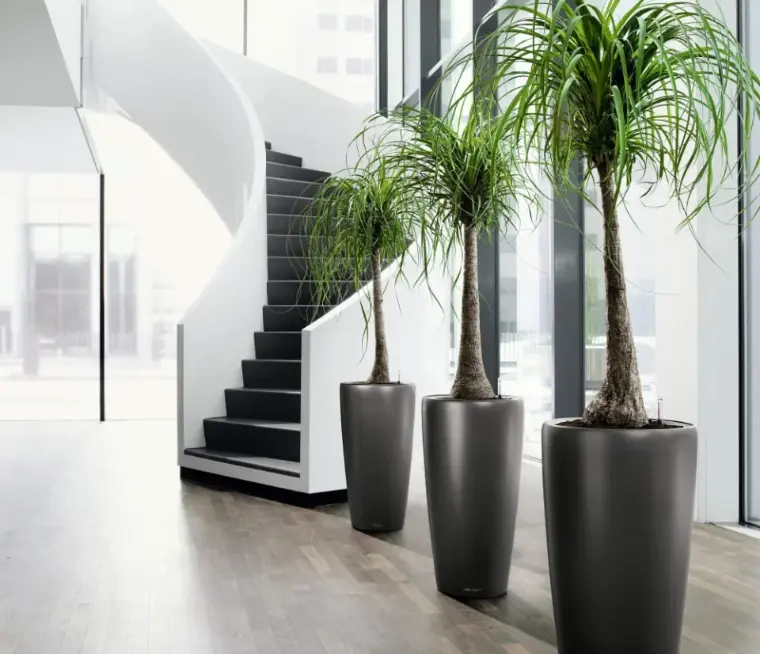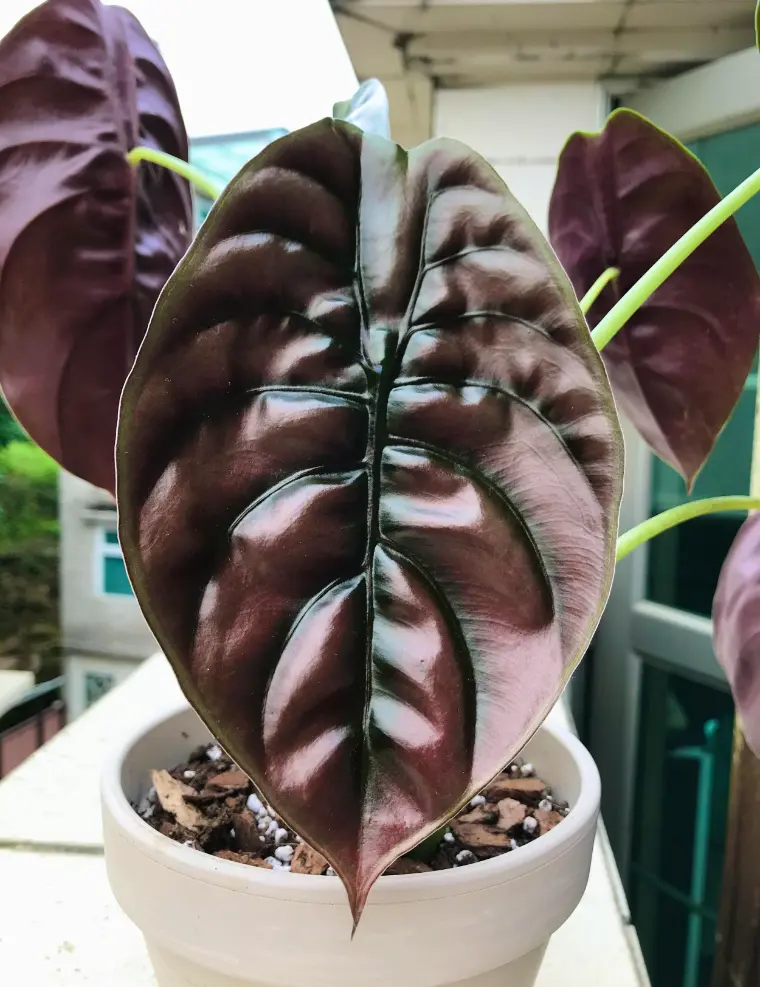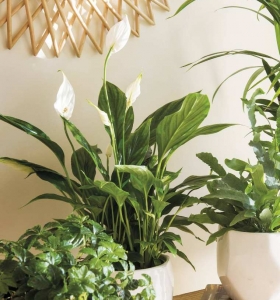Tendencias de plantas interiores 2023: Plantas de diseño; mínimos cuidados y minimalistas
Tendencias de plantas interiores 2023: Plantas de diseño; mínimos cuidados y minimalistas
En los últimos años, el mundo de la decoración de interiores ha experimentado una evolución notable, en la cual las plantas se han convertido en elementos indispensables. La incorporación de la naturaleza a los espacios habitables ha aportado frescura, armonía y un toque de vida a los hogares y oficinas. En esta ocasión, nos adentramos en las tendencias de plantas interiores para el año 2023, donde destacan las plantas de diseño, de mínimos cuidados y minimalistas.
Las plantas de diseño son el nuevo must have en la decoración de interiores. Estas plantas no solo embellecen cualquier espacio, sino que también se convierten en auténticas obras de arte. Sus hojas esculpidas, colores vibrantes y formas únicas hacen que sean el centro de atención en cualquier ambiente. Algunas de las especies de plantas de diseño más populares son la Calathea Orbifolia, la Philodendron Birkin y la Alocasia Polly. Estas plantas se adaptan perfectamente a cualquier estilo decorativo, desde el moderno hasta el bohemio, aportando elegancia y sofisticación.
Otra tendencia en alza son las plantas de mínimos cuidados. En un mundo cada vez más acelerado, muchos buscan tener la belleza de la naturaleza en sus hogares sin tener que dedicarle demasiado tiempo y esfuerzo. Las plantas de mínimos cuidados son ideales para aquellos que no tienen experiencia en jardinería o para aquellos que tienen un estilo de vida ocupado. Algunas especies que destacan por su resistencia y sencillez son las suculentas, las cactus y las plantas de aire, como las Tillandsias. Estas plantas requieren poca agua y pueden sobrevivir en condiciones de luz y temperatura variables, convirtiéndolas en excelentes opciones para aquellos con poco tiempo para dedicarles.
En la era del minimalismo, las plantas también se han adaptado a este estilo decorativo tan popular en la actualidad. Las plantas minimalistas se caracterizan por su apariencia sencilla, líneas limpias y colores neutros. Este tipo de plantas se integran de manera armoniosa en espacios con muebles y accesorios de diseño minimalista. La Monstera Deliciosa y la Sansevieria Trifasciata son dos ejemplos perfectos de plantas minimalistas, con su estructura elegante y su color verde intenso que aporta vida sin sobrecargar el ambiente.
En conclusión, las tendencias de plantas interiores para el año 2023 nos invitan a acercarnos a la naturaleza de una manera innovadora y práctica. Las plantas de diseño, de mínimos cuidados y minimalistas nos permiten disfrutar de la belleza y la frescura de la naturaleza sin necesidad de dedicarles demasiado tiempo ni espacio. Así, con estas propuestas, podemos crear ambientes modernos, elegantes y llenos de vida en nuestros hogares y oficinas. ¡El futuro de la decoración de interiores se tiñe de verde! En resumen, las tendencias de plantas interiores para 2023 incluyen:
– Plantas de diseño: con hojas esculpidas, colores vibrantes y formas únicas.
– Plantas de mínimos cuidados: ideales para personas ocupadas o sin experiencia en jardinería, como suculentas, cactus y plantas de aire.
– Plantas minimalistas: con apariencia sencilla, líneas limpias y colores neutros, como la Monstera Deliciosa y la Sansevieria Trifasciata.
¿Quieres darle un toque de verde a tu hogar? ¡No solo se trata de estética! Las plantas son purificadores naturales que nunca pasan de moda. No solo ayudan a prevenir el moho y la humedad, sino que también mejoran la calidad del aire, disminuyen la contaminación y nos brindan un mejor descanso y concentración. Además, son hermosas, decorativas y pueden atraer la salud, la abundancia y la buena suerte. En resumen, ¡la naturaleza es increíble!
Descubre las tendencias de plantas interiores 2023
Aunque pensábamos que el interés por las plantas interiores disminuiría después de la pandemia, nos equivocamos. El mundo vegetal ha abierto nuevas posibilidades y las tendencias de plantas interiores han evolucionado. Las plantas de interior ya no son las mismas, ahora hay diferentes tipos y estilos que atraen a las personas. Las tendencias son cíclicas y cambian según las necesidades de cada individuo.
¿Qué buscan las personas en las tendencias de plantas de interior?

En las tendencias de plantas interiores 2023, encontrarás opciones para todos los gustos. Algunas personas buscan plantas fáciles de cuidar, que no requieran mucho mantenimiento ni atención constante, como suculentas y cactus. Otros amantes de la naturaleza prefieren especies raras y exóticas que desafíen sus habilidades de jardinería. Cada planta tiene sus propias necesidades, pero todas pueden brindar alegría y belleza a tu hogar.

Ya sea que busques plantas minimalistas para decorar tu hogar o especies de diseño que destaquen por su color, patrón, forma o textura, las tendencias de plantas interiores 2023 tienen algo para todos. Estas plantas pueden elevar cualquier espacio y agregar un toque único a tu decoración.
Plantas interiores de diseño
Las plantas de diseño son aquellas especies raras o poco comunes que destacan por su aspecto único. Estas plantas pueden ser grandes protagonistas en la decoración de tu hogar, al igual que una alfombra nueva o una mesa de café. Por ejemplo, el Philodendron Brandtianum tiene hojas con vetas de madera que contrastan perfectamente con muebles de hormigón. Si quieres llamar la atención sobre ciertas piezas de tu interior, estas plantas son ideales.
Tendencias de plantas interiores: Begonia Alas de ángel
Discover the Most Beautiful Indoor Plants for 2023
Among them is the Angel Wing Begonia with polka dots, which thrives in shade indoors. It is a unique and attractive plant. Its name honors its folded, heart-shaped leaves that resemble angel wings. Native to Mexico, this plant is precious, exotic, and eye-catching. A true gem for our interior spaces.
Introducing the Monstera Albo
The Monstera Albo is another trendy indoor plant with unique foliage and magnetic appeal. When given the opportunity, it produces cream-colored flowers that are not overly showy. This popular and vibrant plant is native to the tropical jungles of Central and South America and belongs to the Monstera genus of the Araceae family. It thrives in most indoor conditions.
Introducing the Red Secret
The Red Secret, also known as Alocacia Cuprea, is an impressive miniature plant with decorative foliage that dominates its height. This plant is native to Borneo, warm regions of South America, and Asia, where it grows on the forest floor in tropical jungles. Its leaves emerge with a greenish-copper color that darkens as they mature, almost resembling metallic shades. It is exceptionally decorative.
Introducing the Philodendron Brandi
Last but not least, the Brandtianum, also known as Philodendron Brandi or Silver-leaf Philodendron. It is a climbing tropical vine famous for its striking leaves. This rare and highly sought-after plant features attractive olive green leaves adorned with striking gray and silver spots. It looks great in hanging baskets as well as in pots.
These designer plants are so exclusive that they can cost anywhere from 300 to 4000 euros, if you can find them. However, they have become so popular that they will likely soon be available in local stores and nurseries. They can also be purchased online from stores like The Sill and Bloomscape.
Low-Maintenance Indoor Plant Trends
Lately, with increasing work travel and longer office hours, we need plants that require minimal attention. Whether we’re lazy or easily distracted, it doesn’t matter. What we need are plants that can tolerate neglect for a while and are easy to care for. The plants I always recommend, even for beginners, are basic but stunning, providing a touch of confidence that allows you to explore this beautiful world a little more.
Lovely Miniature Plants: Succulents
Among the low-maintenance plants are succulents. These versatile miniatures captivate at first sight and can practically take care of themselves. Succulent terrariums allow you to have a self-sustaining island that you never have to water. They create a microclimate and develop like magic, creating beautiful miniature worlds.
Indoor Plant Trend: Pothos
![]() Discover the Travel-Boosting Pothos Plant
Discover the Travel-Boosting Pothos Plant
Pothos is a plant that inspires wanderlust. This climbing variety can thrive with very little light, and with proper care, its leaves can grow as large as a monstera.
The Snake Plant
The snake plant is another trendy and impressive plant. It can thrive with very little light and almost no water, making it capable of helping with humidity and mold problems by feeding directly on them. It only needs to be watered every 10 days or every three weeks during non-growth periods.
ZZ Plants
ZZ plants belong to the same relaxed semi-succulent species. The Zamioculcas is considered a modern and minimalist indoor plant that thrives with minimal maintenance and in various conditions. It is one of the easiest plants to care for. While it can flower when mature, its defining feature is its perennial leaves that emerge from its rhizomes.
Minimalist Indoor Plant Trends for 2023

Minimalist plants are predicted to be a huge hit in 2023. These plants have sparse foliage and a sculptural feel achieved through pruning or removing leaves from the early stages of planting. This encourages the plant to grow upwards in other areas instead of increasing its canopy. By removing lower leaves, you are giving it a push to continue growing upwards.

This category includes species like Pleomele and Dracaena Marginata. Olive trees and fiddle leaf fig trees are perfect for minimalist white spaces as they grow tall without bulky leaves. They are discreet and can thrive with the right adaptations in any location.

Indoor plants have reached a new level, as we now consider how to seamlessly integrate them into our homes with more thoughtfulness and clarity. Living Wild explores this idea in their book, suggesting that we make real decisions based on our personal style, mood, and room ambiance, seeking out plants that can truly elevate the space beyond just a touch of green nature. Plants live and grow with us, teaching us how to create small living artworks in our homes.

















